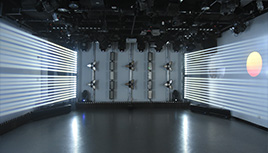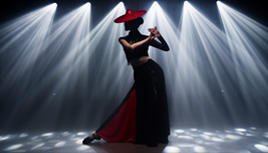How to Assess the Impact of Stage Lighting on Event Audience Experience
2025-03-10 Post By: Longmangroup
As a seasoned procurement manager in the stage lighting industry, one of the most important aspects of selecting stage lights for live events is their impact on the audience experience. Stage lighting doesn’t just illuminate the performance; it contributes to the atmosphere, mood, and visual storytelling of an event. This article will break down how to assess and select stage lighting that enhances the overall audience experience, ensuring that the right products are chosen to meet both technical and aesthetic demands.1. Understanding the Role of Lighting in Event Atmosphere
Lighting plays a crucial role in setting the mood and atmosphere of any event. Whether it's a concert, theater performance, or corporate event, the right lighting can create an immersive environment that enhances the emotional impact of the performance. The color temperature, beam angle, and movement of lights all contribute to this atmosphere.
- Example: For a rock concert, you might use bright, saturated colors like red and purple to create a high-energy, intense atmosphere. In contrast, a theater performance may require softer, more natural lighting (often in the range of 3200K) to allow the audience to focus on the performers while maintaining a more intimate, comfortable setting.
2. Choosing the Right Types of Lights for Audience Engagement
Different types of stage lights serve different purposes, and selecting the right combination can enhance how the audience experiences the event. Below are several common lighting types used in live events and how they contribute to the audience's experience:
a. Moving Head Lights
Moving heads, such as the Clay Paky Sharpy or Martin MAC Aura, are known for their ability to create dynamic, fast-moving lighting effects. They allow you to change the direction, color, and shape of the light beam during a performance, keeping the audience engaged.
- Impact: Ideal for concerts and high-energy events where movement and dramatic lighting are crucial to maintaining excitement.
Pixel bars, like Chauvet PXL Bar 12, provide versatility and can be used for creating vibrant, eye-catching effects. Each individual LED in a pixel bar can be controlled independently, allowing for creative patterns and sequences.
- Impact: Great for events where visual creativity is key, such as electronic music festivals or immersive performances. They can create stunning visual effects that captivate the audience’s attention.
Par lights, such as the ETC Source Four PAR, are often used for basic color washes and broad area illumination. They are perfect for ambient lighting or washing the stage with a consistent light color.
- Impact: Suitable for theater productions, conferences, or any event that requires a steady, controlled light source for general illumination.
Profile lights like the ETC Source Four are highly customizable and provide crisp, sharp light edges. These lights are ideal for spotlighting specific performers or objects on stage.
- Impact: Essential for creating focus, such as highlighting a solo performer in a theater play or a keynote speaker at a corporate event. They help direct the audience’s attention to important elements of the performance.
Laser lights, often used in concert lighting or nightclubs, produce sharp, vivid beams that can cut through fog or haze to create visually stunning effects.
- Impact: Ideal for events that need dramatic and high-contrast lighting effects, such as music festivals, DJ performances, or raves. They can significantly enhance the visual excitement of the event.
When assessing the impact of stage lighting on the audience, technical specifications like lumens, beam angle, color rendering index (CRI), and adjustable settings are essential to ensuring that the lights will meet the needs of the event.
- Lumens: Measure the light output. A higher lumen count indicates a brighter light. For larger stages or outdoor events, you need high-lumen lights to ensure visibility.
- Beam Angle: Determines how wide or narrow the beam is. A narrow beam (e.g., 10 degrees) is used for spotlighting, while a wide beam (e.g., 40-60 degrees) provides more general coverage.
- CRI: This measures the ability of a light to show colors accurately. A high CRI (above 90) is important for events like theater performances, where true-to-life color representation is crucial.
4. Color Temperature and Gels
The color temperature of stage lights is a vital consideration for the overall ambiance. Warmer color temperatures (around 3000K-3500K) create an intimate, relaxed feeling, while cooler color temperatures (around 5000K-6500K) create a more energetic and focused atmosphere.
- Example: For a classical concert, you might want warmer lighting to create an intimate and welcoming environment. On the other hand, for a fashion show, cooler lighting might be preferred to provide a sleek, professional look.
Tip: Choose lighting with adjustable color temperature or select lights that are compatible with gels to have more control over the atmosphere.
5. Long-Term Effects and Sustainability
Stage lighting is a long-term investment. Considering the energy efficiency and durability of your lights is essential to ensure they are sustainable and cost-effective in the long run. LED lighting solutions, such as LED profile lights and pixel bars, consume less power and have a longer lifespan than traditional incandescent or halogen lights.
- Example: LED lights from brands like Chauvet or Martin offer better energy efficiency, lasting longer and reducing maintenance costs over time.
6. Evaluating Cost vs. Performance
When choosing lights, balancing cost with performance is key. It's important to prioritize durability and quality over low upfront costs, especially if you're buying equipment for high-profile events or long-term use.
- Example: A high-end moving head light like the Clay Paky Mythos 2 may have a higher initial cost but offers incredible flexibility, speed, and color effects. It can significantly elevate the performance experience, making it worth the investment.
Conclusion
Stage lighting is a powerful tool that shapes how the audience experiences an event. By understanding the impact of various lighting types—such as moving heads, pixel bars, profile lights, and laser lights—and considering technical specifications like color temperature, beam angle, and lumens, you can select the best lights to create the desired atmosphere and visual appeal. Always prioritize durability, energy efficiency, and compatibility with your event needs to maximize long-term performance and audience engagement. By making thoughtful, informed decisions, you can elevate the experience for both the performers and the audience, ensuring your events are memorable and impactful.














